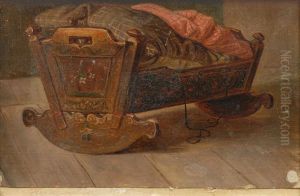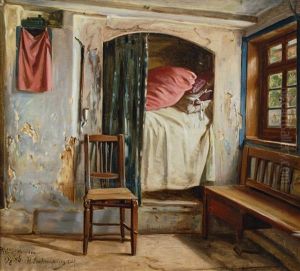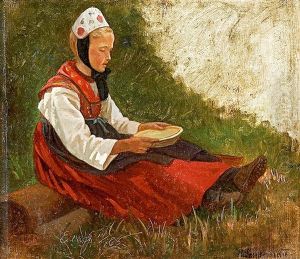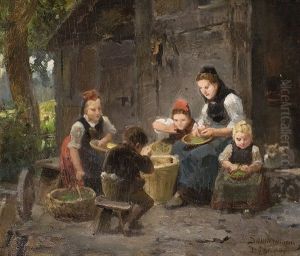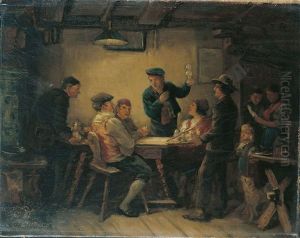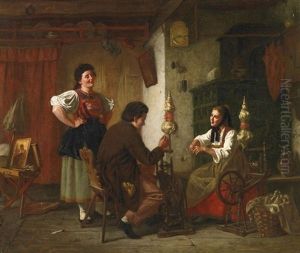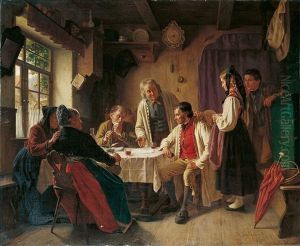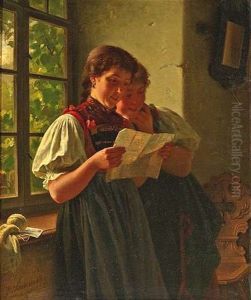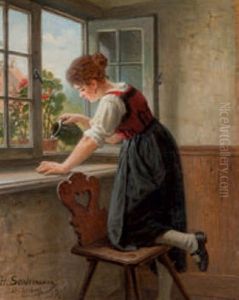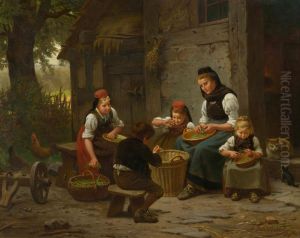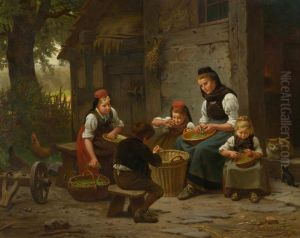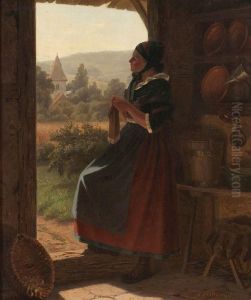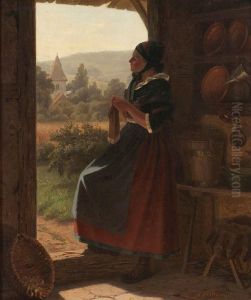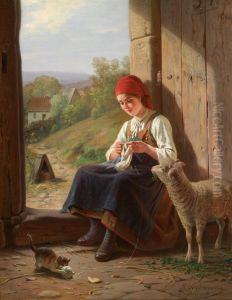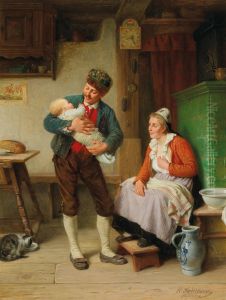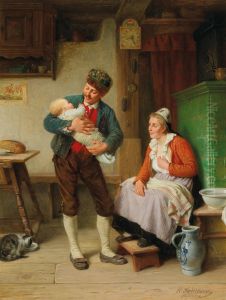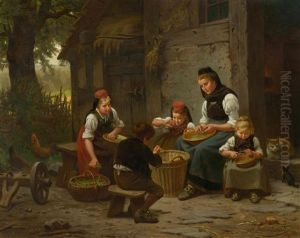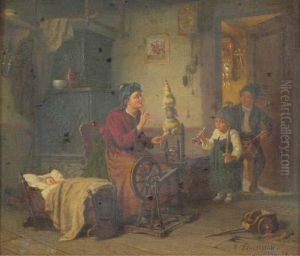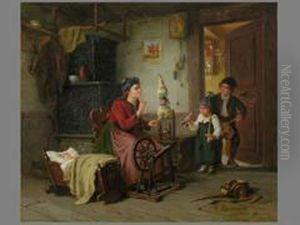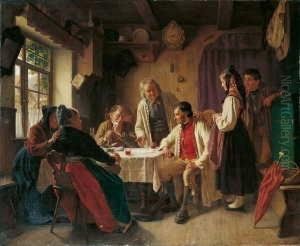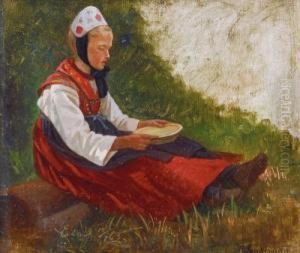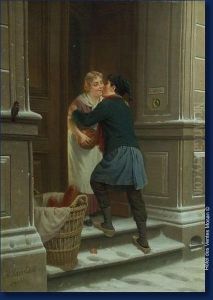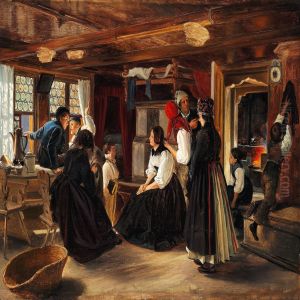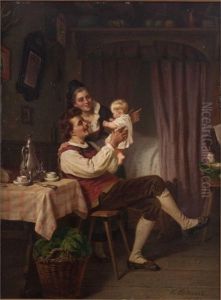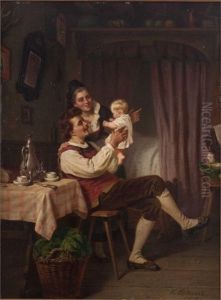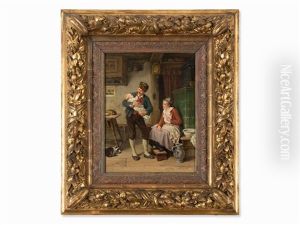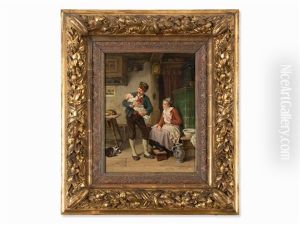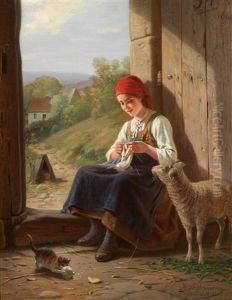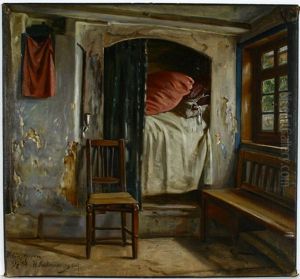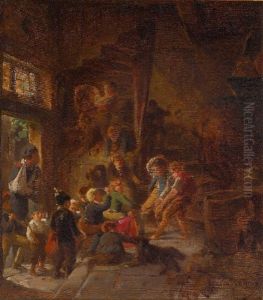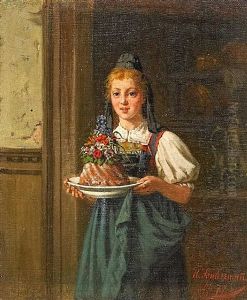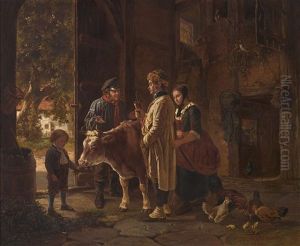Hermann Sondermann Paintings
Hermann Sondermann was a German painter, primarily known for his genre works and interior scenes characterized by a masterful play of light and shadow. Born on January 3, 1864, in Duisburg, Germany, Sondermann developed an interest in art at a young age. He pursued his artistic education at the Düsseldorf Academy of Arts, a prominent institution that was particularly influential during the 19th century for its emphasis on academic painting and for fostering a number of renowned artists.
Sondermann's style was deeply influenced by his time at the Academy, where he was taught by teachers who emphasized meticulous technique, precision, and a clear narrative in painting. He was particularly influenced by the Düsseldorfer Malerschule (Düsseldorf school of painting), which focused on detailed historical and genre scenes. Although Sondermann is not widely known today, his works during his lifetime were well-received and he was considered a skilled practitioner of his craft.
Throughout his career, Hermann Sondermann continued to refine his technique, paying close attention to the effects of light and shadow, which became a defining characteristic of his work. His paintings often depicted everyday scenes, imbued with a sense of tranquility and a certain poetic quality. Sondermann was not only interested in capturing the appearance of his subjects but was also concerned with conveying a deeper emotional atmosphere through his careful composition and lighting.
Despite the quality of his work, Sondermann never achieved the same level of fame as some of his contemporaries. Nonetheless, his paintings can be found in various collections and have been displayed in exhibitions focused on the Düsseldorf school and 19th-century German art. Hermann Sondermann passed away on December 20, 1926, in Düsseldorf, leaving behind a modest but respected body of work that remains of interest to scholars and collectors of German genre painting. His legacy is preserved by the continued study and appreciation of his art, which reflects the technical prowess and thematic concerns of his era.

